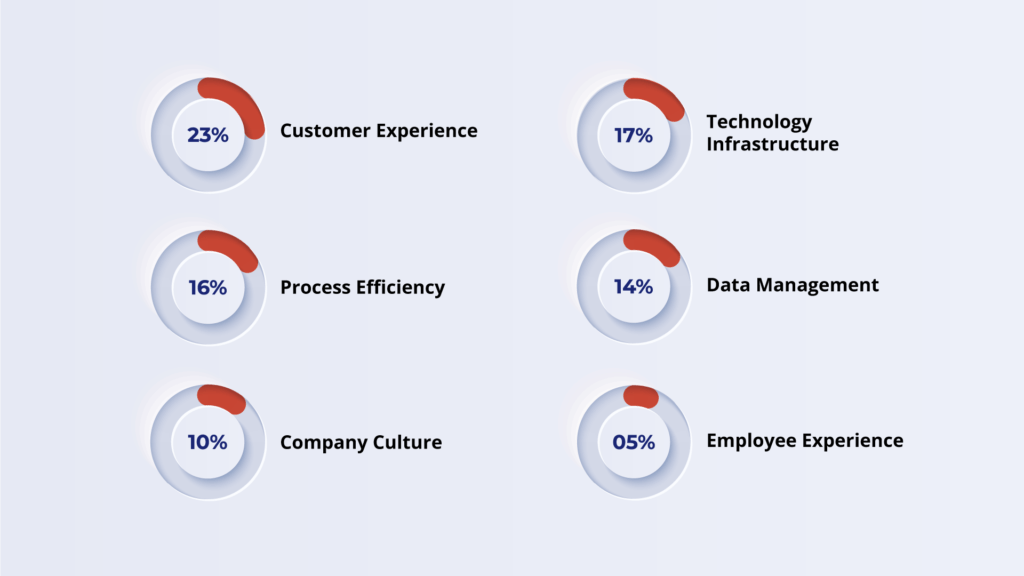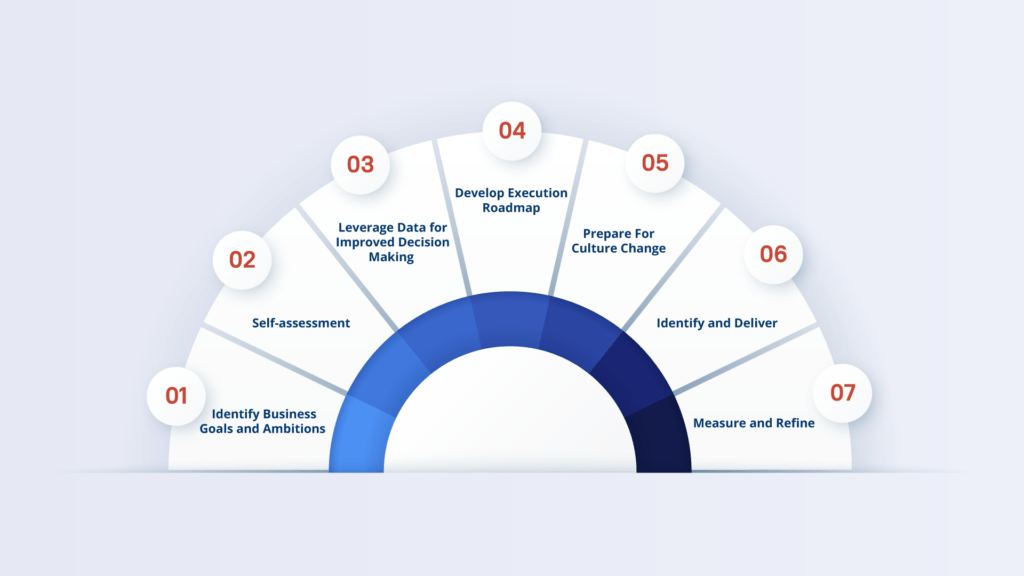The race towards digital transformation (DX) has begun and, in recent years, has disseminated and accelerated across industries and geographies significantly. Not only has it prompted a radical shift in existing business models, but it has also compelled organizations to embrace a new culture and structure aligned with IT infrastructure in a bid to drive productivity and sustainability, remain relevant, and achieve measurable positive financial results.

According to Gartner’s 2023 Board of Directors survey, although 30 per cent of boards have started making strides toward digital transformation goals, only 19 per cent have achieved their goals.
These findings illustrate that despite the need for swift digital transformation, a significant percentage of organizations have failed to welcome and integrate these changes in one fell swoop, primarily because digital business transformation is a multi-step process fraught with missteps and disruptions for leaders and employees alike.
That begs the question, what are the digital transformation best practices that can aid organizations in setting their digital transformation journeys on the course to success?
Although several roadmaps to approaching this journey, this blog will focus on the seven key phases or building blocks of a sustainable digital transformation strategy.

1. Identify Business Goals and Ambitions
For many companies, digital transformation starts with identifying the organization’s strategic goals and priorities, and this often begins with a clear 5 – 10-year plan. To effectively, if not convincingly, sell the digital transformation concept, it is important to start from a business value or priority standpoint.
For instance, in 2017, Walmart set a clear goal of transforming itself into a “digitally enabled” company and invested in advanced technologies like self-checkout and online grocery delivery resulting in a 30 per cent increase in sales.
2. Self-assessment
According to a study conducted by Harvard Business Review, organizations that assess their current strengths and weaknesses are 3x more likely to succeed.
To improve and scale operations through digital transformation, start by assessing the current digital business maturity, digital competencies, readiness for change, and technology currently in use.
3. Leverage Data for Improved Decision Making
Leverage data analytics, market research, and customer insights to identify trends, patterns, resources, and opportunities for a data-driven digital transformation strategy.
4. Develop Execution Roadmap
The organization must first evaluate the market and analyze external forces and potential disruptors before developing a roadmap for digital transformation.
Subsequently, the organization can build upon a roadmap for execution by defining the possible actions/steps, identifying necessary resources, and measuring success, establishing key performance indicators, and drafting a timeline for implementation.
The digital transformation roadmap should include strategies for creating or modifying business and revenue models and analyzing digital technologies. This, in turn, will boost customer satisfaction and provide the organization with a competitive advantage.
Typically, a great business transformation roadmap allows for agility and growth while prioritizing migration initiatives such as the modernization of applications used, integration of a cloud, automation, DevOps, or Robotic Process Automation.
The Bank of America, for instance, launched “Project Everest,” a digital transformation initiative to improve the customer experience by simplifying the online banking process for customers, which has resulted in a tremendous increase in customer satisfaction.
5. Prepare For Culture Change
According to a study by PwC, most organizations embedded with a strong culture of change are 1.7 times more likely to succeed at integrating a digital transformation strategy. Hence, understanding the organizational culture, its potential to adjust to modern technologies, and garnering the support of C-suite employees is critical to transformation.
Developing a team mindset and culture that embraces change with representatives from each part of the value chain forms organizational governance that can efficiently execute a digital transformation strategy.
For instance, General Electric launched a company-wide initiative to transform GE into a digital company and invested in training its employees on the latest technologies, improving its footing in the DX landscape.
6. Identify and Deliver
A McKinsey study found that most organizations that successfully implemented digital transformation achieved 28 per cent of their value within three months.
Set the stage for future initiatives by identifying and delivering a proof-of-concept digital transformation initiative. Choosing a business transformation initiative that is easy and quick to prove ROI (Return on Investment) in a brief period will help garner momentum, demonstrate its value, and ensure the long-term success of the DX strategy.
7.Measure and Refine
Since digital transformation is not a one-off process, it is vital to monitor and measure the success of the pilot initiative and its impact against predetermined metrics or KPIs such as overall customer satisfaction, sales, and operational efficiency.
Furthermore, keeping the necessary stakeholders engaged in a feedback loop will make it easier for everyone to adapt and refine the strategy and roadmap based on the data-backed results.
Conclusion
Digital transformation is a fundamental change necessary for organizations spanning industries and locations. Hence, it is paramount for organizations to create a data-driven digital transformation strategy that ensures all stakeholders and members alike are aligned and prepared to achieve results.
If you are implementing a sustainable digital transformation strategy and would like to know more about our services, contact the experts at AppsTek Corp today!




